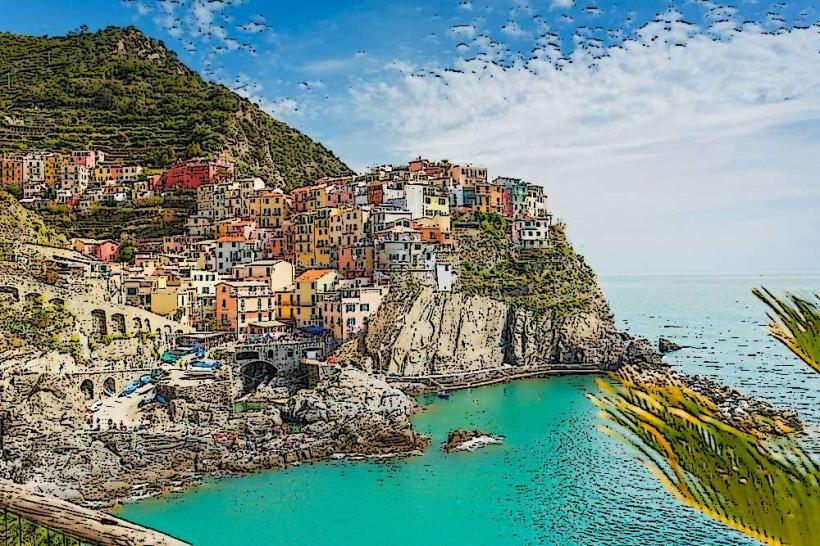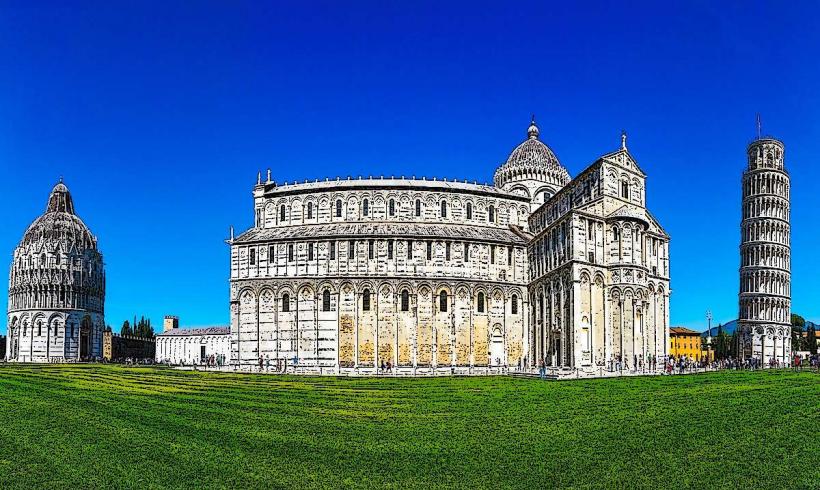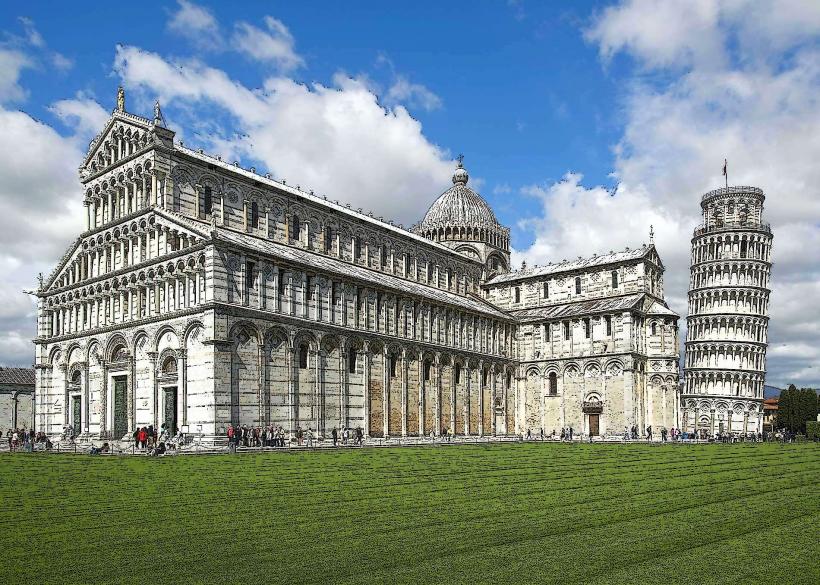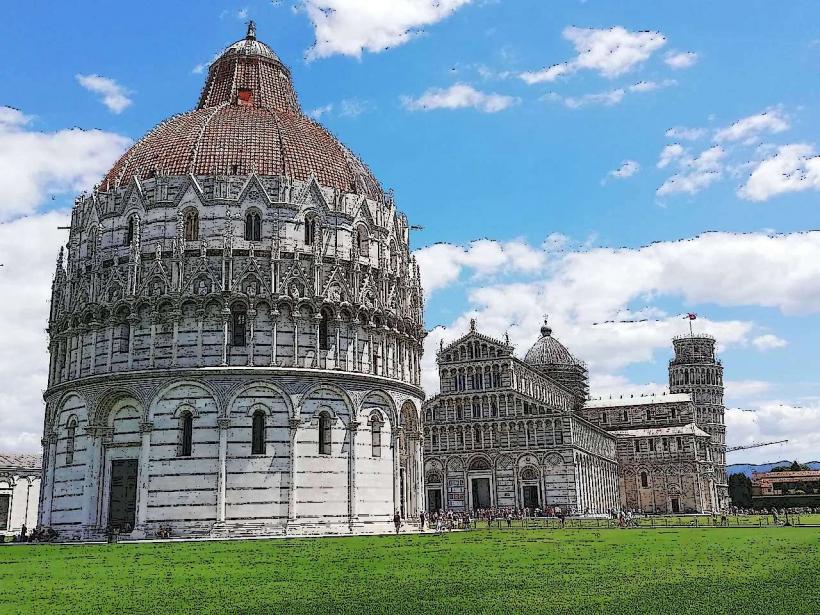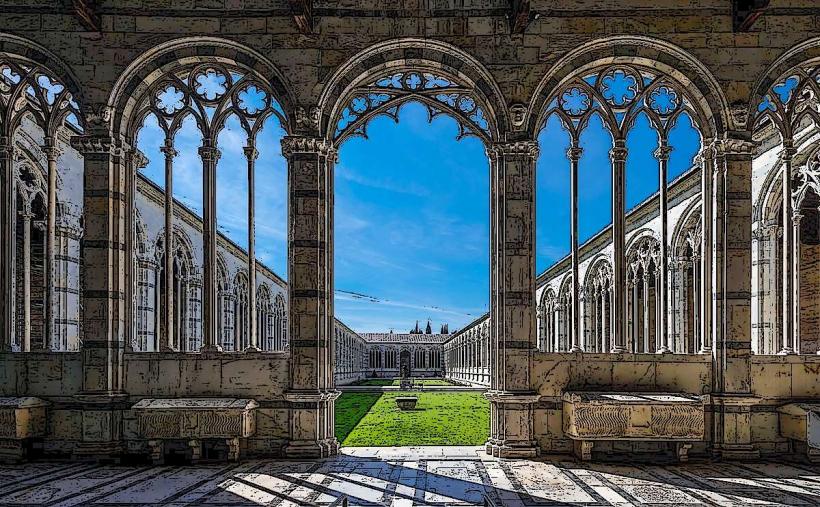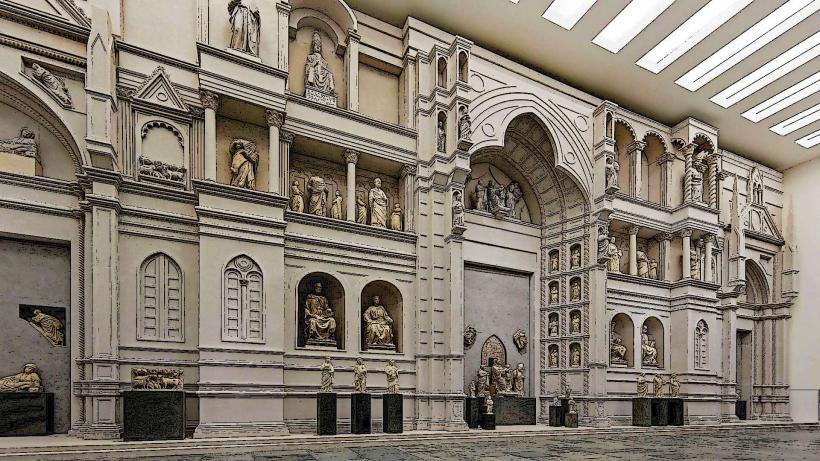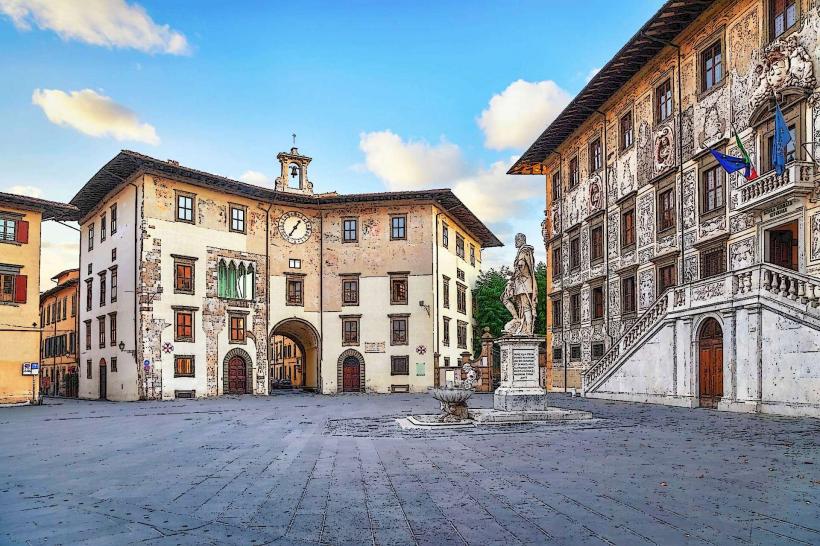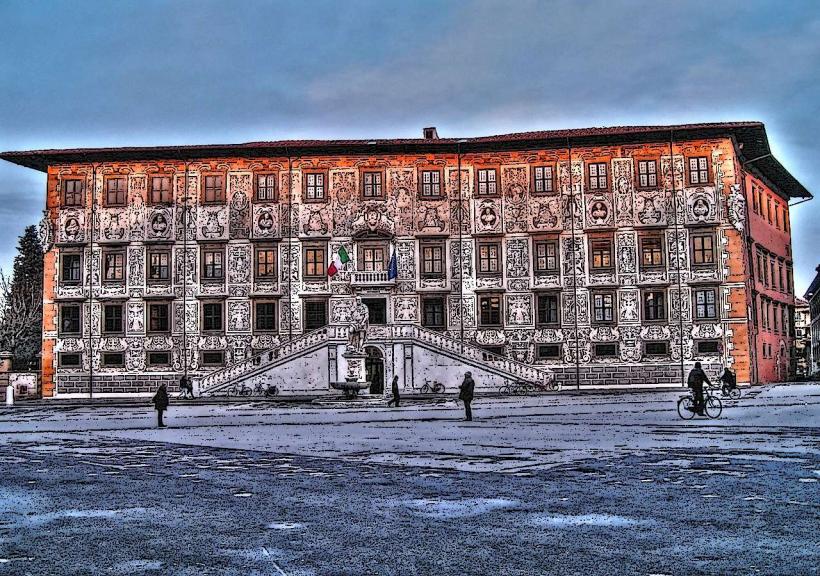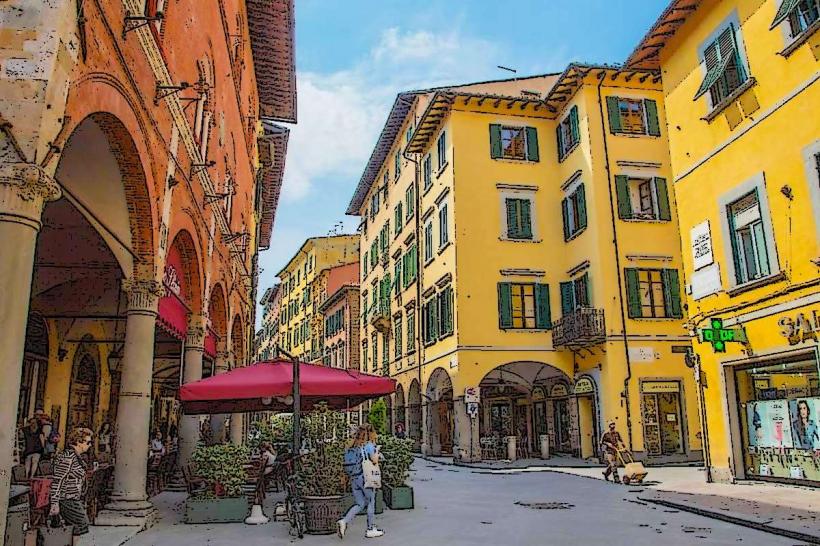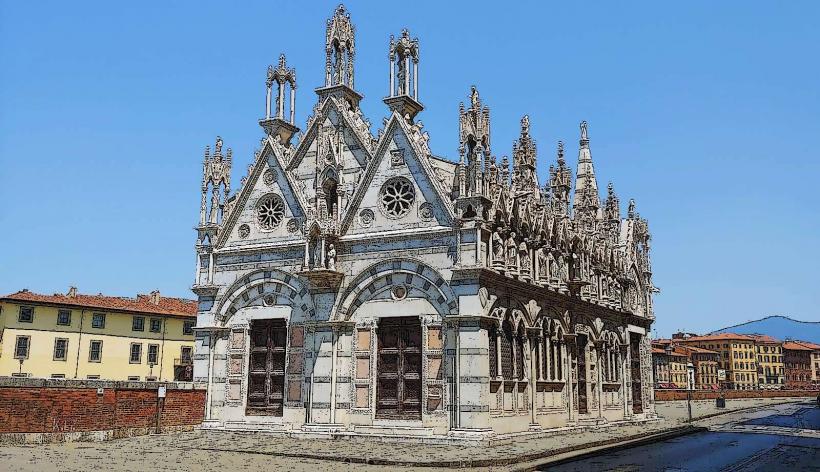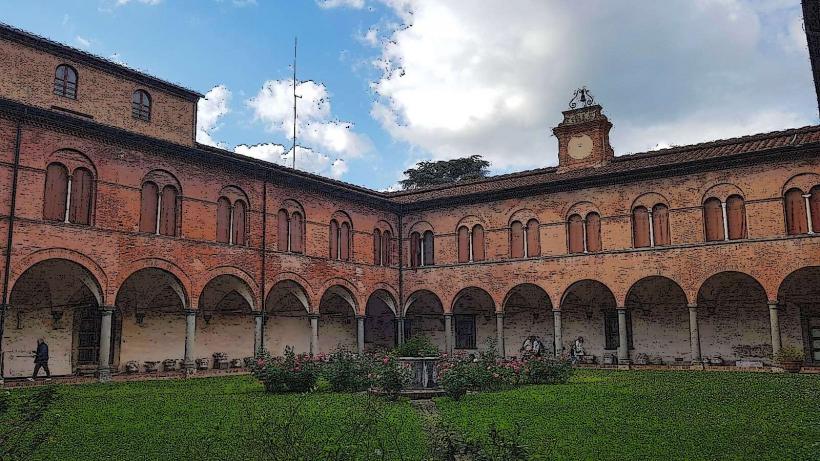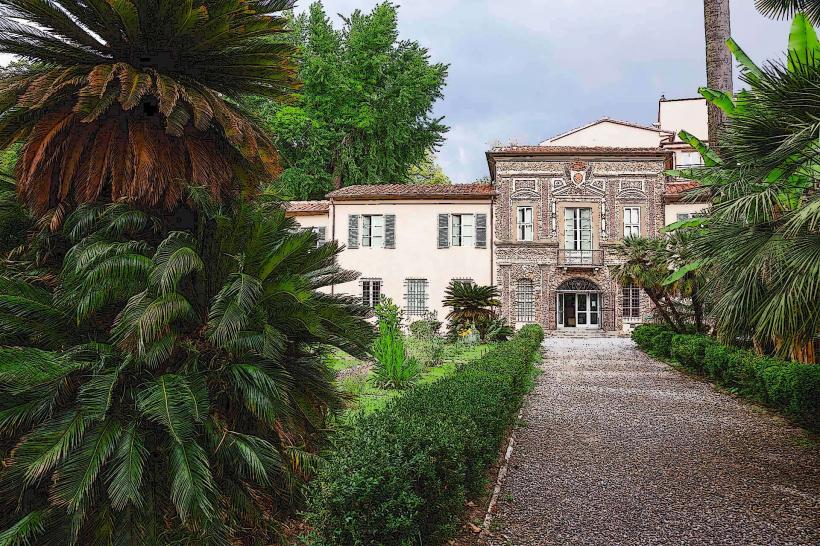Information
Landmark: Leaning Tower of PisaCity: Pisa
Country: Italy
Continent: Europe
The Leaning Tower of Pisa (Italian: Torre Pendente di Pisa) is one of the most iconic landmarks in the world, famous for its unintended tilt and its association with the city of Pisa in Tuscany, Italy. It is part of the Piazza del Duomo complex, also known as the Cathedral Square, and stands beside the Pisa Cathedral and Baptistery of St. John.
Key Features and Historical Overview:
1. Construction and Design:
- The construction of the Leaning Tower of Pisa began in 1173, during the medieval period, and was completed in 1372. It was originally intended to be a freestanding bell tower for the Pisa Cathedral.
- The tower was designed by an unknown architect, though some sources suggest Bonanno Pisano or Diotisalvi may have been involved in its design.
- The tower is a freestanding bell tower made of marble, measuring about 57 meters (186 feet) tall. Its height varies due to the lean, but the typical height is around 56 meters on the highest side and 57 meters on the lowest side.
- The base of the tower is a circular structure with a diameter of 15.5 meters. The tower has eight stories, including the bell chamber, and is topped with a small dome.
- The tilt of the tower is the result of unstable subsoil, which caused it to begin leaning during the construction process.
2. The Tilt:
- The Leaning Tower of Pisa began to lean soon after construction began due to soft ground on one side, combined with poor foundation work and the weight of the marble structure.
- The tilt increased gradually as construction progressed, and by the time the building was completed in the 14th century, the tower had a significant lean.
- At its maximum tilt, the tower leaned at an angle of 5.5 degrees, making it a unique and precarious structure. Over time, engineers worked to stabilize the tower and reduce the tilt.
- In recent decades, extensive restoration efforts have successfully reduced the lean to a safer angle of about 3.97 degrees.
3. Architectural Features:
- The tower is constructed from white and grey marble, and its exterior features seven levels of arches. Each level of the tower has a ring of columns and arches that create a series of arcades around the tower’s cylindrical structure.
- The bells at the top of the tower were added in the 14th century, and they were used to signal important events and times of the day.
- The tower is adorned with sculpted reliefs, including biblical scenes and figures. The most famous features of the tower are its pale marble columns, which give the building a delicate and elegant appearance despite its tilt.
4. Piazza del Duomo Complex:
- The Leaning Tower of Pisa is located in the Piazza del Duomo, a UNESCO World Heritage Site, which also includes the Pisa Cathedral (Duomo di Pisa) and the Baptistery of St. John (Battistero di San Giovanni).
- The Pisa Cathedral is a Romanesque-style building, and the Baptistery is a large circular structure known for its acoustics and the Pulpit of Nicola Pisano.
5. Scientific Significance:
- The Leaning Tower of Pisa is historically significant not only as a marvel of architecture but also in the fields of science and engineering. According to legend, the great scientist Galileo Galilei (born in Pisa) performed experiments on the tower's steps in the late 1500s to study gravity and motion.
- It is said that Galileo dropped two objects of different weights from the tower to demonstrate that they would hit the ground at the same time, challenging the prevailing ideas of Aristotle’s theories on motion. This experiment laid the groundwork for modern physics.
6. Restoration and Preservation:
- Due to the instability of the ground on which it was built, the Leaning Tower of Pisa has undergone several restoration and preservation efforts over the years.
- In 1990, the tower was closed to the public because its tilt had become dangerously severe. Engineers and architects launched a major stabilization project to prevent its collapse. The tower was reopened in 2001 after significant work to reduce the tilt by removing soil from beneath the higher side and reinforcing the foundation.
- The successful stabilization of the tower has made it one of the most visited and studied monuments in the world.
7. Modern-day Visitor Experience:
- Visitors to the Leaning Tower of Pisa can climb the 294 steps of the tower to reach the top, where they are rewarded with panoramic views of the city and the surrounding Tuscan countryside.
- The iconic photo of tourists pretending to "hold up" the leaning tower has become a signature activity for visitors.
- The Piazza del Duomo is a major tourist attraction, and the Leaning Tower is often viewed from different angles, with many visitors posing for photographs near the tower’s lean.
- The Pisa Cathedral and Baptistery are also open for tours, and visitors can appreciate their architectural beauty, including the cathedral’s intricate mosaics and the baptistery’s remarkable acoustics.
8. Cultural Impact and Symbolism:
- The Leaning Tower of Pisa has become a global symbol of Italy’s architectural heritage. Despite its structural instability, it has withstood centuries of pressure and continues to attract millions of visitors each year.
- It is often associated with the city of Pisa and is one of the most photographed monuments in the world.
- The tower represents the beauty and fragility of human achievement, making it an enduring symbol of the persistence of culture and innovation.
Conclusion:
The Leaning Tower of Pisa is much more than a simple architectural oddity; it is a symbol of Italy’s rich history and artistic heritage. Its unique tilt, combined with its remarkable history and cultural significance, makes it one of the world’s most recognized landmarks. Whether for its architectural elegance, its connection to science, or its historical importance, the Leaning Tower of Pisa continues to captivate visitors from around the globe.

